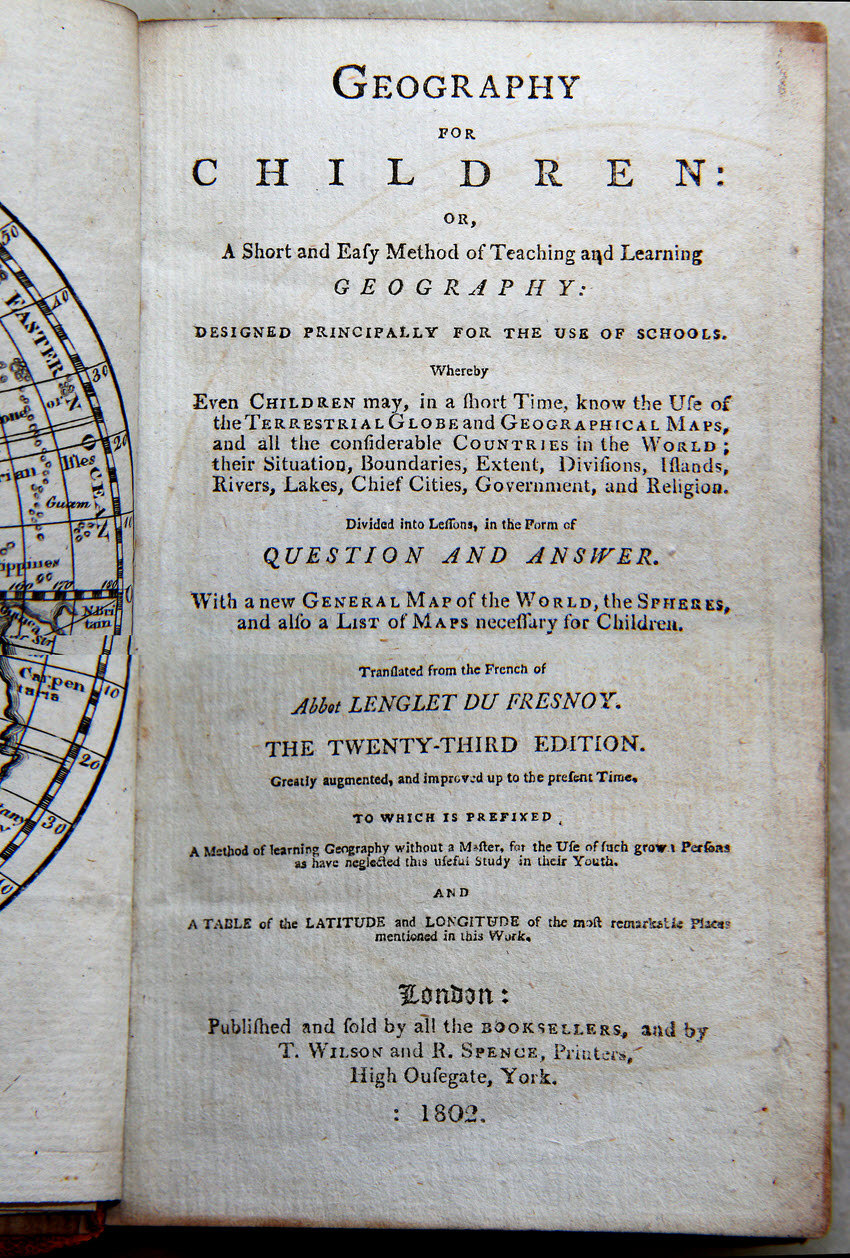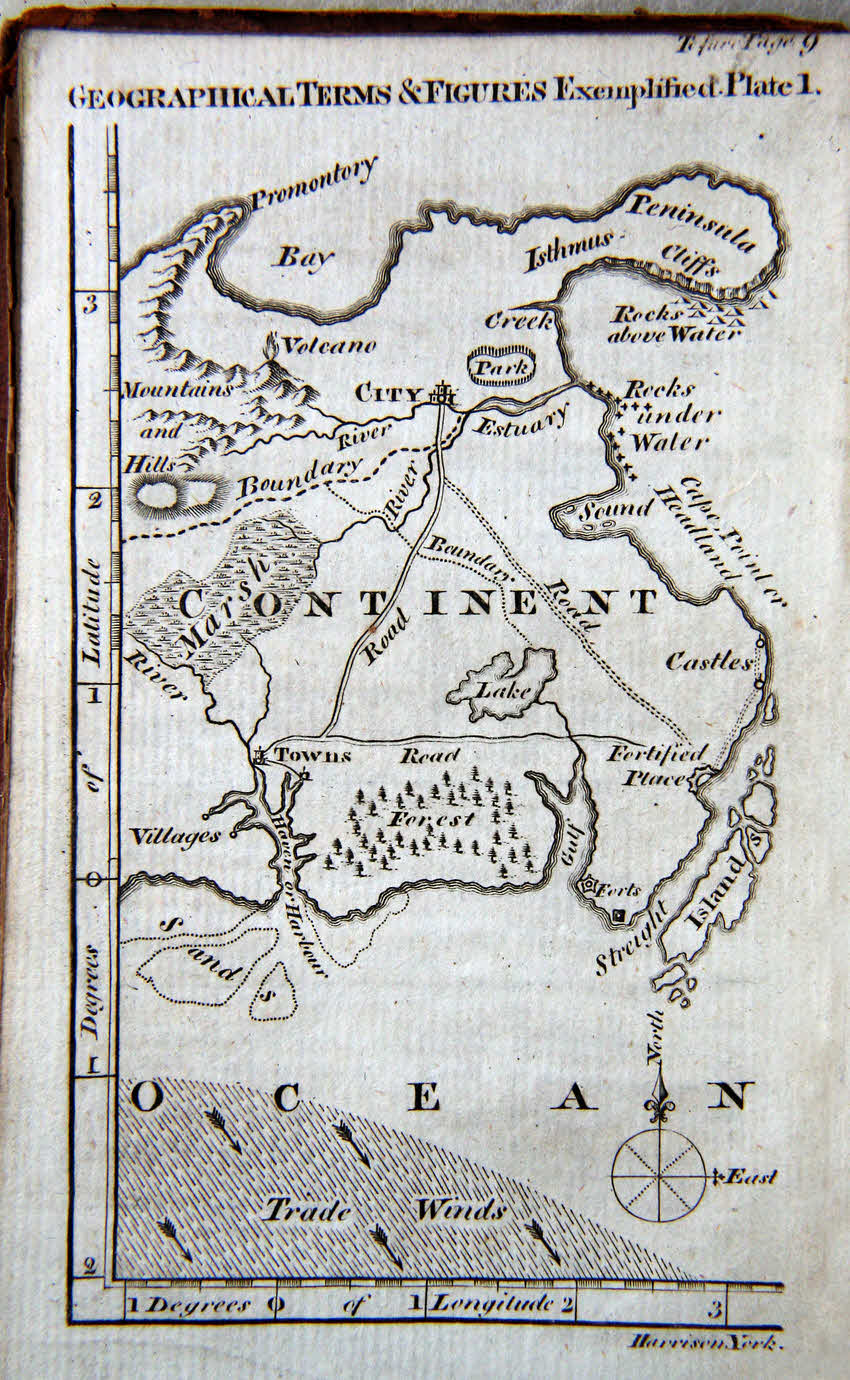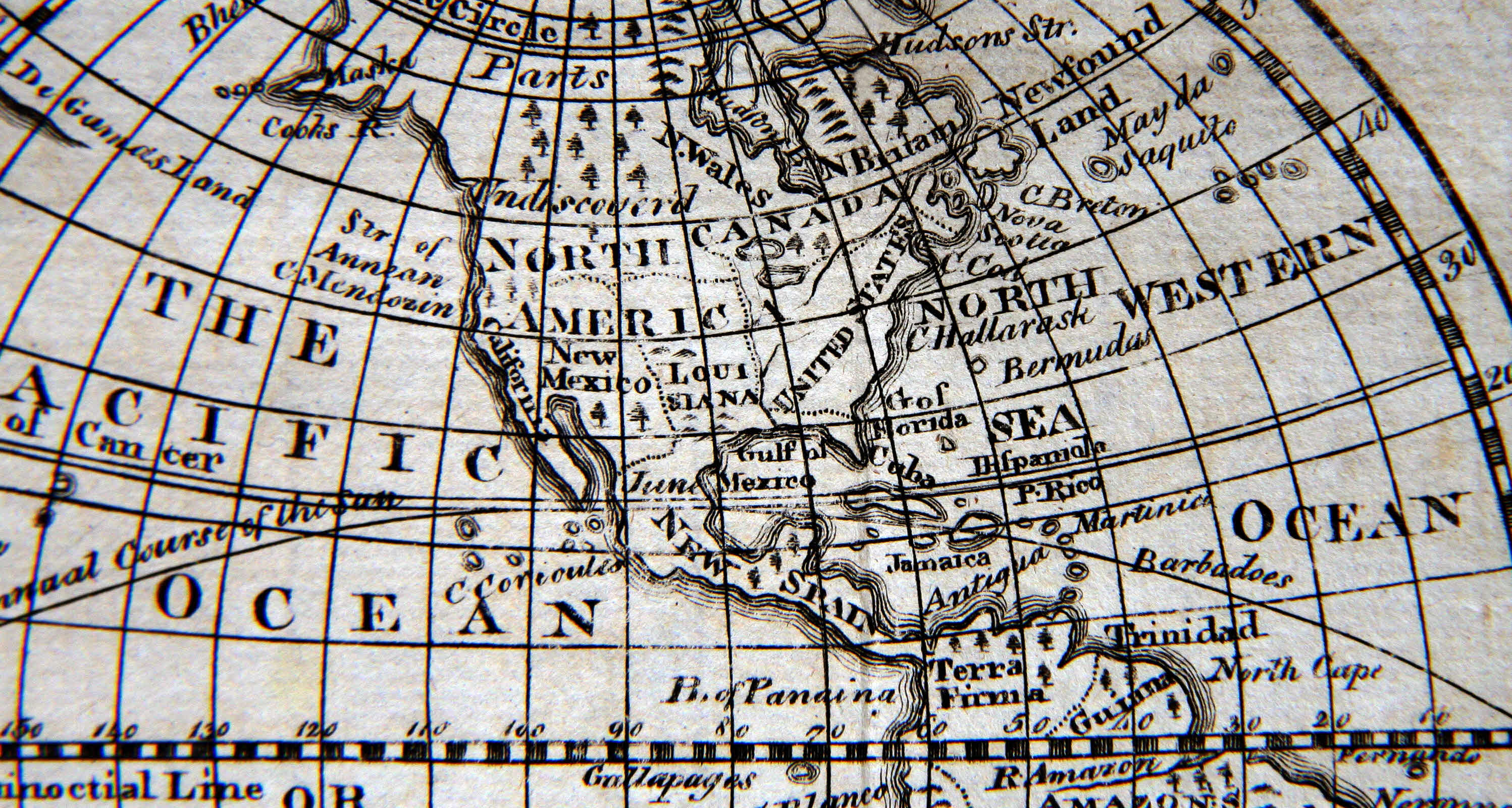Welcome! This is a "detail" page about a book purchased as part of a job lot at an auction of general household "stuff". There is an overview of the job lot, if you haven't already seen that. This is about "book f" in that overview.
Book "f": Somewhat daunting, by today's standards of schoolbooks. The author is a little relentless, perhaps, in his quest to include Everything The Child Should Know. But it did run to at least 23 editions... and is clearly the result of much hard, meticulous.. dedicated?... effort.

The author did not indulge in many plates... but the one below, of Geographical Terms is, I think, rather nice.

Here's a bit of detail for you. I particularly like the "undiscovered" bit.....
The text has far too many things children had to learn... I hope the "undiscovered" part spared them some questions.
We saw on the plate with Geographical Terms that the author did believe in showing mountains. Look at the detail below from the map of the world. The Rocky Mountains of North America are curiously (for 1808) lacking. For a time, there was a myth of a large desert in the American (USA-ian) West, but I would have thought that 1808 is not too early to expect people to know something of the magnificent Rockies? Of course, the map may not have been re-worked since the first edition. (Many copies are reported at Worldcat.org, going back at least as far as 1737 for what seems to be an English edition. Presumably the French original was even older.

Here's what the book suggests children should aspire to know... now, it must be said... just because it was in the book doesn't mean that the children would necessarily have been able to recall it all!...
Almost the whole book consists of "lessons", in which a series of questions are asked, together with "the right answer". No self- expression nonsense in the schoolroom of those geography teachers! (The book is a translation from a French original, original author an abbot. One of those academic Jesuits, perhaps?...)
(This is 1802, remember....)
(See how any adults you know fare!....)
Q: Which are the capital cities of Northern Europe?
A: Copenhagen of Denmark; Bergen of Norway; Stockholm of Swedeland, or Sweden; Moscow and Petersburgh of Russia, or Muscovy.
Q: Which are the capital cities of Middle Europe?
A: Cracow of Poland; Berlin of Prussia; London of the British Isles; Paris of France; Prague of Bohemia; and Presburgh of Hungary.
Q: Why do you omit the capital city of Germany?
A: Germany is an empire composed of several independent states, each of which has its capital city; it is not possible therefore to determine which is the capital city of all Germany; but the election of an emperor is generally made at Ratisbon, and his coronation at Frankfort on the Maine.
Q: Have not the low countries a capital city also?
A: It cannot be determined, because the Low Countries are likewise composed of several republics...
... and then we turn to the capital cities of Southern Europe. What you see above is one page out of 135. M. l'Abbe Lenglet du Fresnoy strikes me as a rather relentless sort. (The southern European cities were on the next page.)
While most of the book is about "facts", there is the occasional footnote which in our more politically correct times may be considered amusing or inflaming, as suits your temperament. One nation's women (!) are given education which... "serve neither to improve their natural good sense, nor instinctive love of virtue".
The inhabitants of another region, we are told, "have always been distinguished by a servile spirit, and a readiness to yield to despotic government.... and most of them have ever appeared effeminate"!
It is curious to me that these footnotes, perhaps rightly separating opinion from "fact", also contain many notes of economic geography which might well have been more facts to inflict on the pupil. E.g., of "Moscovy, or Russia": "The region abounds with copper and iron mines, and supplies most parts of Europe with those commodities."
However, as another example of his stereotyping, the author then goes on to say of Russians that they are "generally of vigorous and hale constitutions"... so far so good!... and "rude, deceitful, and very ignorant"! (All Russians??!) But the text continues with an observation which does have some historical validity, and gives us some insight into how much work was done by editors of the book to keep it current through it's many editions: "... but within the last fifty years, through the great encouragement of the Czar and his successors, they are greatly improved in the arts and sciences." Ah well. Stalin eventually "fixed" that. (The great Czar Peter died in 1725, aged 52, having nominally become Czar as a child.)
Of the French, the French author says... "they are polite, active and inconstant... have a graceful and winning deportment; are airy and gallant... the women.. are conspicuous for their wit, good sense, and cultivated understandings."
But, as already indicated the footnotes do often convey useful bits about the history of regions.
Speaking of history: I don't know if this English translation was significantly different from the original, but it gives England a very generous place. The book opens by addressing generalities, but then spends pages 19-32 on England, with further pages on the rest of the British Isles following.
While book is mostly of the "What is the capital of city" type, there are 14 pages at the end addressing what might be called the geometry of geography, for example, "If the day of the month and the hour at any place be given, how do you find the place where the sun is in the zenith at the time?". (Try getting the answer to that with Google!)
To come: More images, etc.....I am (14 July 2013) in the midst of editing.... Please pester me if that date gets more than three days behind "today"... email contact info at bottom"...
That's the detail on this book. If you enjoyed it, you may want to go "up" to the page about the "job lot" of books it came from, at an ordinary "furniture/ jewelry/ art" auction with only about 5 lots of books out of about 350.
Editor's email address for comments or questions.
![]() Page tested for compliance with INDUSTRY (not MS-only) standards, using the free, publicly accessible validator at validator.w3.org. Mostly passes. There were two "unknown attributes" in Google+ button code. Sigh.
Page tested for compliance with INDUSTRY (not MS-only) standards, using the free, publicly accessible validator at validator.w3.org. Mostly passes. There were two "unknown attributes" in Google+ button code. Sigh.
....... P a g e . . . E n d s .....